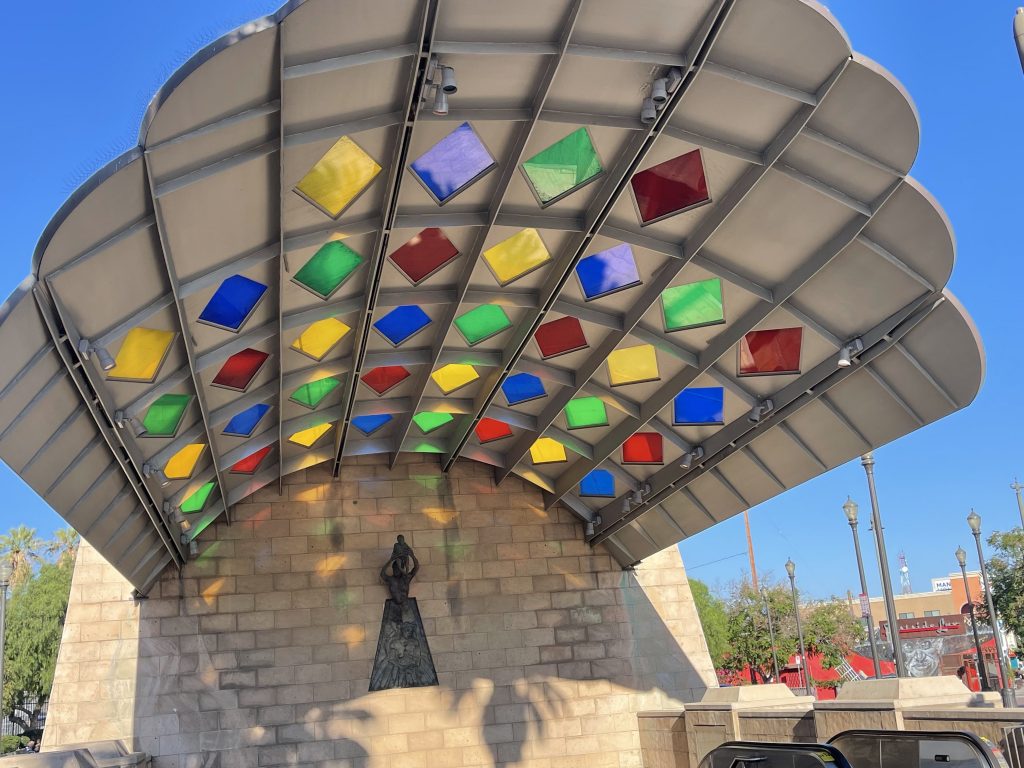
It couldn’t have been scripted any better if it had been written, directed, and produced out of one of the many studios located in Los Angeles – The LA Rams were the 2022 Super Bowl Champions. Down by 4 with 1:29 left to play in the fourth quarter (and a little help from penalties against the opposing Cincinnati Bengals team), Rams quarterback Matthew Stafford connected with receiver Cooper Kupp to put the Rams up by 3 points. The Rams defense led by Aaron Donald would do the rest shutting out the Bengals in the final seconds. LA was not only a city of winners, they had won a Super Bowl in their city, with hometown favorites Dr. Dre and Snoop Dogg performing the halftime show, in the brand spanking new SoFi Stadium. But once the lights go down, and the crowds go home what happens to the people of LA – particularly the residents of Inglewood who’ve been displaced by this 3,000,000-square-foot mega sports complex?
The truth is they began feeling the effects long before Super Bowl Sunday. For more than eight years residents of Inglewood – mostly renters – saw their rents surge as high as $1,100-$1750. Even the homeless population has been relocated to other parts of the city like the infamous Skid Row. Some argue that the development was good for homeowners who have seen their property value go up nearly 90 percent since the stadium began construction, but is this sustainable as more people in this historically Black and brown neighborhood are pushed out? More importantly, is having a state-the-art football field worth potentially ripping the soul out of a city that means so much to so many?
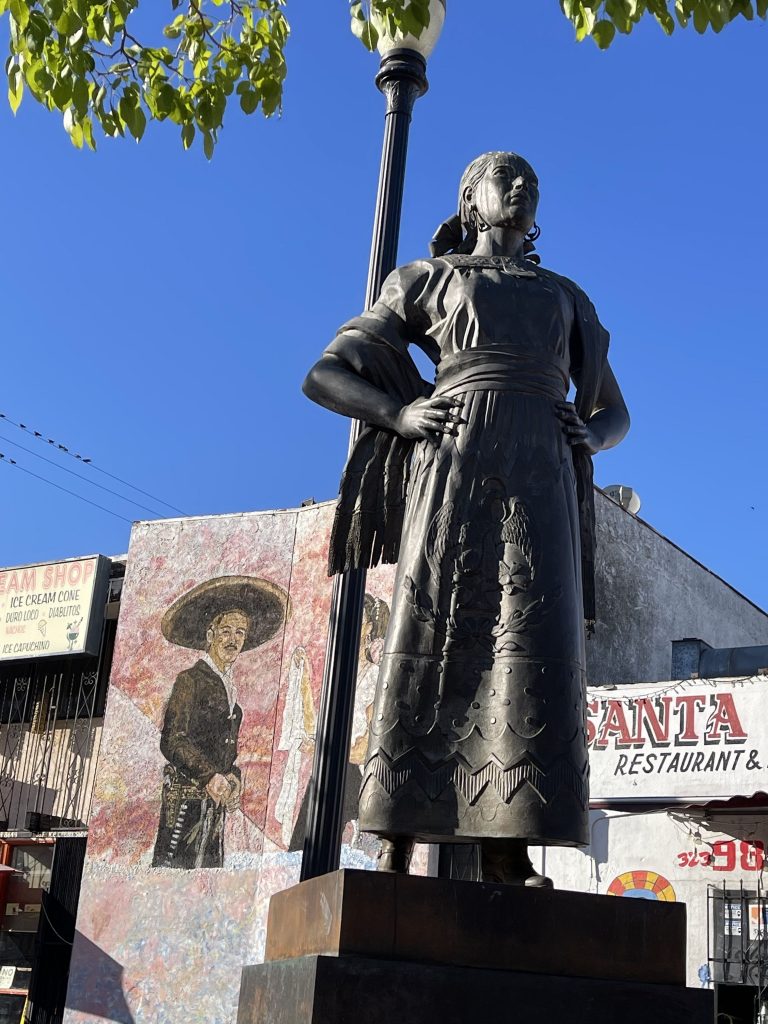
California Dreamin’
You know he’s gonna be dressed to kill
– Hollywood, Rufus featuring Chaka Khan
He’s gonna find some brand new thrills
Whatever he’s been looking for, tell him that there’s so much more
In Hollywood
People from across the globe have found their way to Los Angeles. Historians tell us that the first two Chinese people to arrive in Los Angeles were Ah Luce and Ah Fou, who arrived in 1850. By 1900 there were 3,000 Chinese in Los Angeles. Many had been brought to America to work on the transatlantic railroad and would settle in the city. They established what is now referred to as Old Chinatown. Following the Chinese Massacre of 1871, the neighborhood came to be known as dangerous. The Chinese would soon be displaced by the city to build Union Station. This would not be the last time the Chinese people of Los Angeles would be pushed aside in favor of industry, but through sheer resilience, they remain an integral part of the city.
Black Americans made their way to Los Angeles first through small migrations in the mid to late 1800s and then The Great Migration beginning in the early 1900s. Prior to this, Black American identity in California was more closely aligned with Mexicans of mixed-African descent. This changed at the turn of the century with Black Americans arriving mostly from Texas, Louisiana, and Georgia. They worked, established neighborhoods in downtown L.A. like “Brick Block” and even resorts like Bruce’s Beach. Yet, over the years they would experience their share of displacement through redlining and urban renewal. Places like Bruce’s Beach were seized by eminent domain. Even more troubling was the brutality Blacks experienced from the police. From the Watts Riots of 1965 that resulted in thirty-four deaths to the riots following the acquittal of police officers in the brutal beating of Rodney King and beyond it hasn’t been all roses for Blacks in LA. But they remain because their love for the city runs deep.
Mexicans are the most demonized immigrant minority group in Los Angeles and across the country, but the truth is they were in California long before a white man set foot on the land. Mexican Americans have lived in Los Angeles since the original Pobladores, the 44 original settlers, and 4 soldiers who founded the city in 1781. They have been the largest ethnic group in Los Angeles since 1910 and East Los Angeles is the site of the original barrios of the city. It was until World War II that the fear of communism brought about the anti-immigrant sentiment that would remain a burden upon all Mexicans, Hondurans, El Salvadorians, and others to this day. Still, people of Mexican descent make up 31.9 percent of Los Angeles residents, and 32 percent of Los Angeles County residents. Los Angeles culture is so deeply intertwined with that of Mexican culture that if it were to try and separate itself, it would suffocate and die.
These huddled masses yearning to breathe free found their air in the sunshine state. And though they were often maligned, and mistreated, they are the heart of the city.
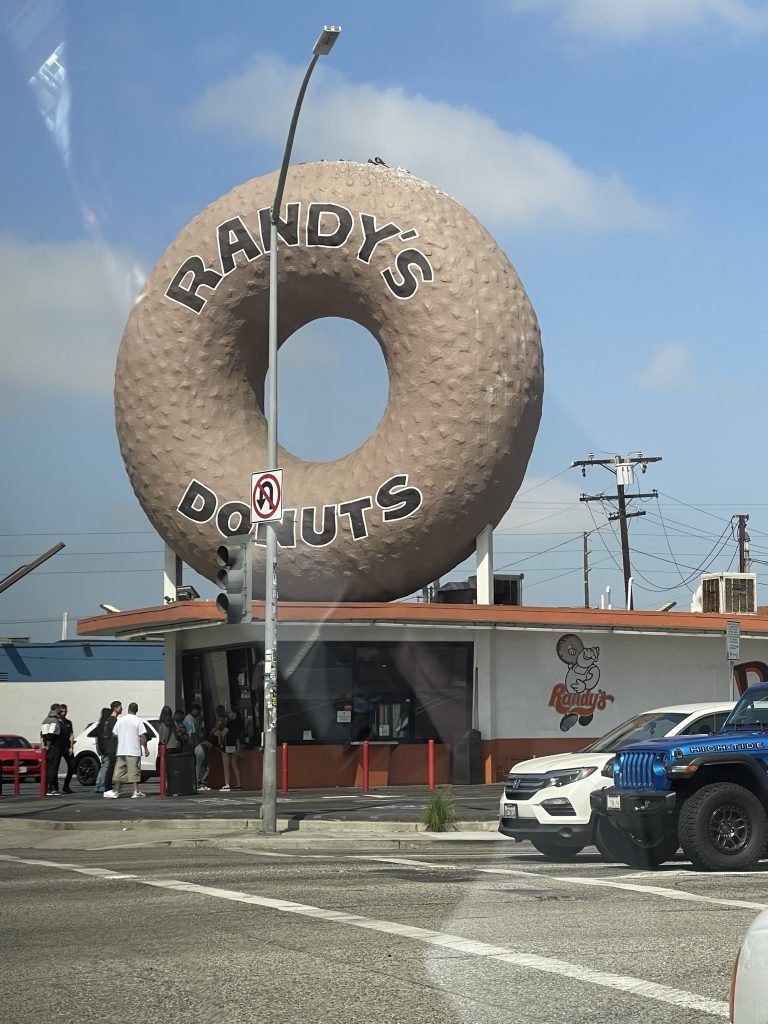
We’re All in the Same Gang
With so many diverse cultures converging in one place coming together can be hard. There are language barriers, segregated communities along with systems of white supremacy that create divisions among minority communities that make it hard to find common ground and build cross-racial solidarity. Yet in the end, we all want the same thing – fair affordable housing, safe schools for our children, a healthy environment to raise a family, and the simple joys of life. Once people in the community understand this the barriers fall away people can begin envisioning the future. But it takes more than California dreaming to build these coalitions. SPARCC understood that to fully embed this initiative in a sprawling and diverse city like Los Angeles that it would have to do the work and pull in the right thought leaders to gain buy-in from the community.
Los Angeles is leading the nation as an example of how to deliver infrastructure investments that communities need. In elections from 2008 through 2016, Angelenos called for over $200 billion for transportation, housing, and parks. Landmark state climate legislation passed in 2008 created a powerful statewide framework for reducing greenhouse gas emissions. At the same time, Los Angeles County embarked upon a voter-approved transformation of regional transportation systems – improving and building 12 transit lines, consisting of light rail projects, subway extensions, and bus rapid transit projects.
Investment began with a $40 billion sales-tax measure in 2008, and improvements will be accelerated further with an additional sales-tax measure approved in November 2016 that will generate over $120 billion. Voters have also shown support for housing and parks in 2016, passing $1 billion for homelessness in the City of Los Angeles and $100 million per year for parks across the county. In this critical moment, the way we build the places we live, work, and play should benefit all Angelenos.
The Los Angeles SPARCC collaborative partners include the California Community Foundation, Esperanza Community Housing, Inclusive Action for the City, the Alliance for Community Transit Los Angeles (ACT-LA), Community Power Collective, Long Beach Forward, Social Justice Learning Institute, and the Los Angeles Regional Open Space and Affordable Housing collaborative (LA ROSAH). Together, these groups are working to change the region’s discriminatory legacy and enable every Angeleno’s pursuit of economic stability and good health through affordable homes, quality living-wage jobs, and accessible low-carbon transportation. The partners’ shared goal is to harness existing investment to create more affordable housing, ensure existing residents can stay in their homes, extend the reach of the region’s public transit system, and expand green infrastructure vital for improving local water resources.
The Los Angeles SPARCC collaborative partners identified a strategic approach that leverages community organizing and investment in strategic jurisdictions across the region, including the City of Los Angeles, Los Angeles County Unincorporated, Long Beach, Inglewood, and the Southeast Los Angeles sub-region.
The collaborative approach and proposed interventions include:
- Support the preservation and construction of affordable homes connected to transit.
- Promote policies that protect low-income renters vulnerable to displacement, particularly around transit stations and new infrastructure investments.
- Accelerate investments in bicycle, pedestrian, and shared-mobility infrastructure.
- Build capacity for innovative community-led green infrastructure.
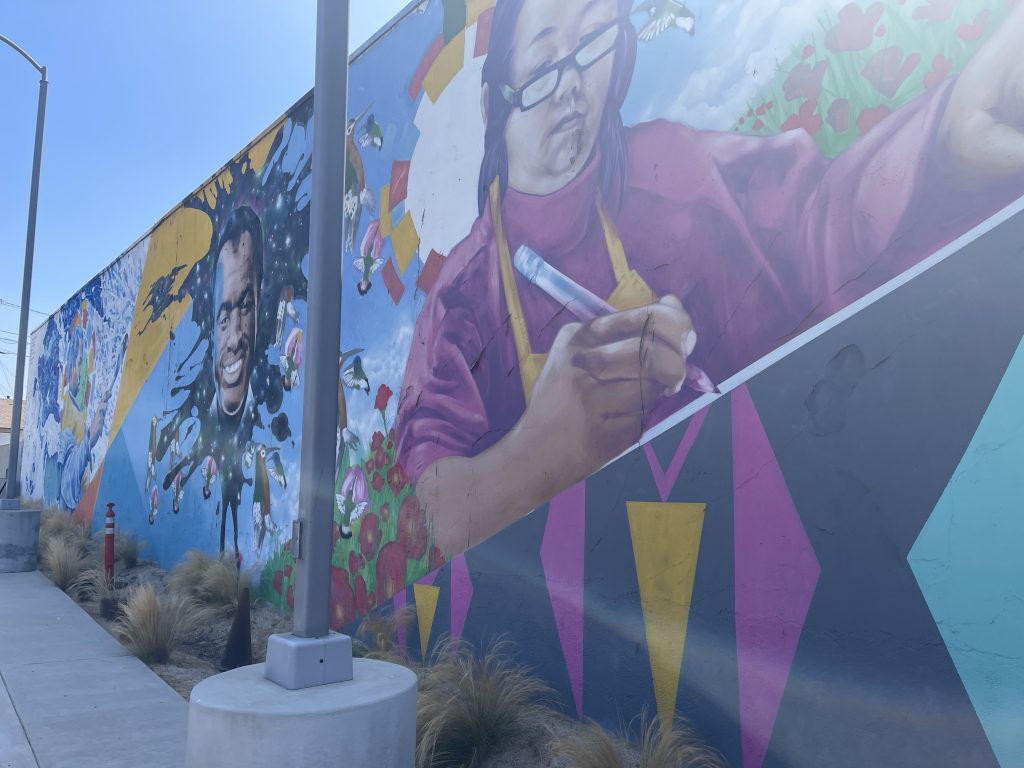
SPARCC was able to fund a number of projects in Los Angeles including:
Community Owned Real Estate (CORE)
The creation of community-owned assets is at the heart of ensuring a vibrant community that is able to maintain its cultural assets. The SPARCC Capital grant was used to provide additional equity for the assemblage and rehab of commercial buildings to be rented to small local businesses. These buildings will be community assets in perpetuity and will provide affordable rents for up to 20 entrepreneurs of color at risk of being displaced by rising rents.
Thai Town Marketplace
With rising rent and fewer commercial spaces available, Thai Town Marketplace is designed to serve immigrant entrepreneurs. The project will also activate public space, improve the built environment, provide additional cash in the local economy, and increase the number of jobs available in an area adjacent to public transit.
Social Justice Learning Institute
SJLI has grown out of its existing headquarters and is planning to acquire and move into a new facility while staying in its target service geography of Inglewood. SPARCC grant dollars were used toward predevelopment and exploring the feasibility and acquisition of a new property.
Daimaru Hotel
Daimaru Hotel, a 48-unit historic single room occupancy (SRO) hotel acquired by Little Tokyo Service Center (LTSC), is located in the Little Tokyo neighborhood of Los Angeles. The rental apartments are affordable to low-income individuals. LTSC targets workers in retail jobs who are struggling to find affordable housing in the gentrifying neighborhood. In addition to the 48 residential units, the building also has three commercial spaces on the ground floor currently occupied by two minority-owned restaurants and one minority-owned start-up.
LTSC’s long-term strategy to strengthen the Little Tokyo district through historic and cultural neighborhood preservation includes the development of a LIHTC affordable housing project on a City-owned lot behind the Daimaru building that LTSC controls.
LA CLT Coalition
In response to the COVID-19 and housing crises, LA County has created and funded an acquisition fund; providing up to $14 million for the purchase of properties to be maintained as long-term affordable housing. The acquisitions under this Pilot Community Land Trust (CLT) Partnership Program will be led by a coalition of CLT and community development corporation (CDC) entities located in LA County. Acquired buildings will be scattered site, and non-Section 8 residential housing to be converted to Community Land Trusts through the CLT and CDC coalition. SPARCC funds were used as a source of bridge grant funding to allow quick purchases of identified properties and due diligence. Acquisition of 40 to 50 affordable units in about eight buildings is anticipated.
Southeast Asian Community Alliance: Land Bank Research
Led by the Southeast Asian Community Alliance (SEACA) the research for a county pilot program seeks to address housing issues and concerns related to gentrification and displacement risk among low-income communities adjacent to the LA River. The LA River Master Plan is spearheaded by the County Department of Public Works, who manage stormwater and sewer infrastructure in the county. The land bank research looks to conduct a landscape analysis to identify models along with an internal scan of various local agencies to determine which county functions may have overlapping, comparable, or complimentary roles to the land bank. Foundational to this analysis will be working with government agencies and other stakeholders to outline a specific strategy for managing a 5- to 10-year land bank pilot program, initially targeting properties adjacent to the LA River with the potential to expand to other areas in the county. LA County Land Acquisition Fund currently operated by the County CEO’s office is the likely vessel for the land bank approach and activities. A landbank would allow the County to purchase land and buildings in advance of investments for infrastructure and open space. Upon acquisition the County can work with affordable housing developers through an request for proposal or similar qualifying process for affordable housing developments. Research partners for this grant include the Southeast Asian Community Alliance (SEACA), Street Level, OLIN, and Gehry Partners. At the conclusion of the research the County will have comparable models along with a draft budget and operational plan to consider operationalizing when federal funding becomes available.
Los Angeles City Mobility Advocacy Group: Local Electoral Advocacy
The Los Angeles City Mobility Advocacy Group will develop an intersectional issue-based cross-promoting candidate questionnaires among progressive interest groups to establish a collaboration among lead mobility advocates. A candidate survey for the 2022 LA mayoral election will allow for education and outreach among local voters about the core issues of transportation equity, racial equity, housing, health and education access, and economic opportunity. Development of the candidate survey will be led by a core group of mobility advocates and will focus on transportation issues and will be coordinated with other surveys covering related topics to create a collection of surveys that will cover a number of key topic areas. The survey will be target distribution to candidates in late March or early April with the intention of ensuring that candidates will be able to respond before the primary election in June. Simultaneously, an intersectional group of advocates will shape a policy platform for the next mayor of Los Angeles to consider, adopt, and incorporate into policies and investments. The Los Angeles City Mobility Advocacy Group will utilize facilitated sessions to allow for broader cross-section of groups and individuals to co-create the platform. Current organizations identified to organize these efforts include Los Angeles Bicycle Coalition, LA Walks, Climate Resolve, and MoveLA.
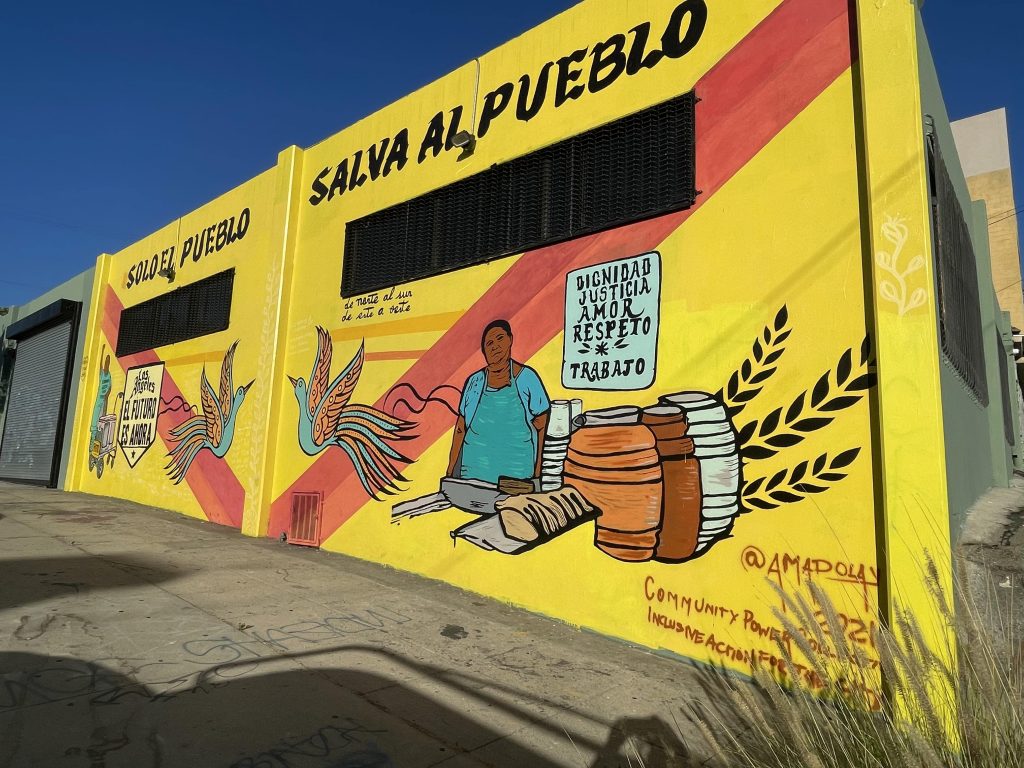
The People Have the Answers
Los Angeles is a city full of amazing people from diverse backgrounds that love their city. Equity begins when we listen to those most impacted. From there we must give people a voice, build them up to have their own agency, making sure they feel included in the changing landscape of their communities. This allows people to not just survive but thrive – which allows them to live free. That was the dreams of those first migrants who came to Los Angeles and it remains the dreams of their descendants. The people have the answers, and if we allow them to lead everyone can be a winner.